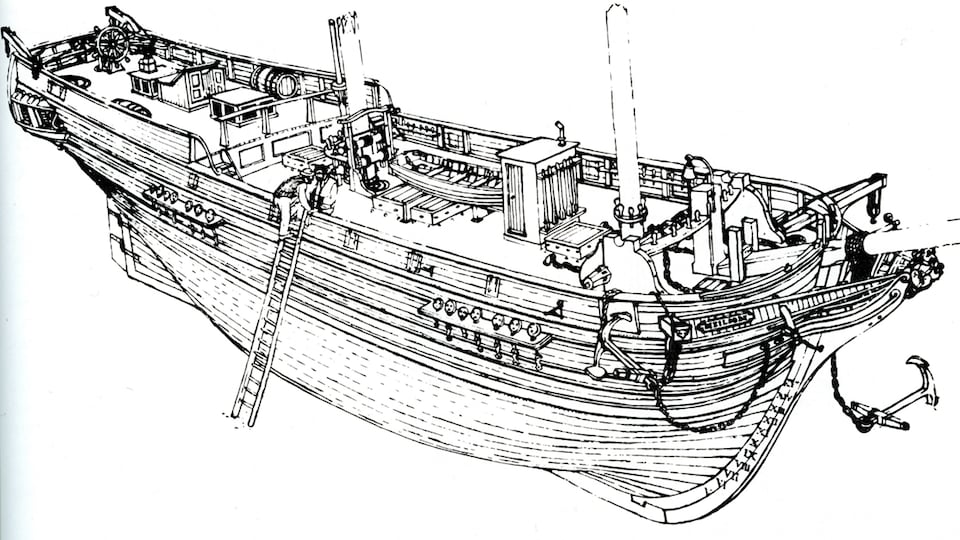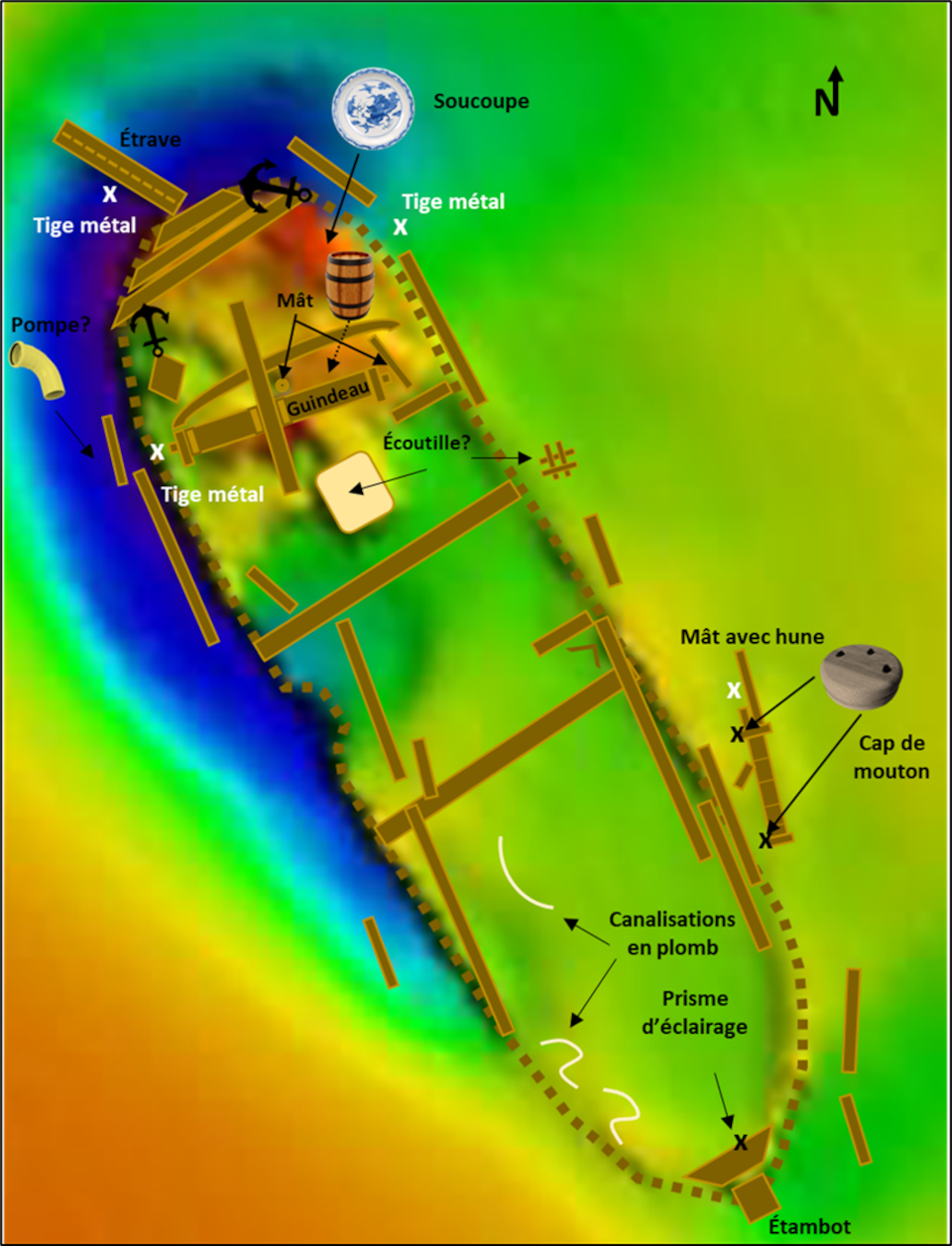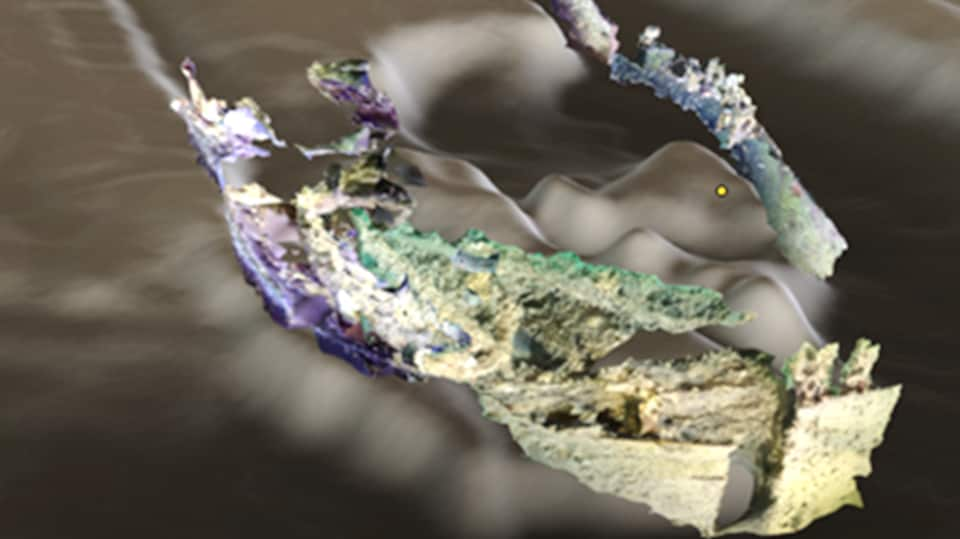Owned by a wealthy Scottish family from Montreal, the Scotsman left the then Canadian metropolis on November 20, 1846, heading for Liverpool, United Kingdom. The next day, near Île du Bic, it struck reefs during a storm and sank rapidly, killing eight of the nine crew members.
The Canadian Hydrographic Service discovered the remains of the ship in 2002 at 30 meters depth. However, it wasn’t until 2015 that they were formally associated with the Scotsman.
The wreck of the Scotsman, a wooden sailboat covered with copper plates 25 m long by 6 m wide, is very well preserved, protected by the darkness and the icy waters of the river.
For an underwater archaeologist, it’s a collector’s item. It is one of the last witnesses of great sailing
says Vincent Delmas, from the Institute for Research in Maritime History and Underwater Archeology (IRHMAS).
” It was at the same time that Montreal was developing and steamboats were beginning to predominate. But there are a few ships left [à voile] like this one all over the world who continue to make transatlantic crossings. »
A group of archaeologists from theIRHMAS visited the Scotsman three times since 2018 documenting everything they found.
The images and videos collected allowed the specialists of the Center for Development and Research in Digital Intelligence (CDRIN) to reconstruct large portions of the ship’s exterior. This technical work and historical research made it possible to create a 3D model and give the boat a second life.
Underwater immersion
We want to put people in the shoes of underwater archaeologists
explains Mr. Delmas. Artificial intelligence and 3D techniques now make it possible to reproduce the conditions in which archaeologists work, thirty meters deep.
Once programmed, the virtual reality headset will simulate the underwater world of the wreck, including the aquatic fauna
, adds Mr. Delmas. It should be noted that around forty animal species now colonize the boat.
Four users will be able to explore the Scotsman at the same time during a museum experience that is intended to be multisensory and immersive. One of the joysticks will serve as a portable lamp, the other as a detailed map of the wreckage
notes Vincent Delmas.
” The families will find themselves in a room of several square meters. They will be able to wander around the site by walking around the remains while looking with their flashlight. »
A virtual archaeologist will accompany the apprentice divers and comment on what appears in front of them.
” We want people to search and be in contact with the remains. Let them realize that exploration isn’t easy, that there’s plankton in your face, that you can’t see anything. »
Modernizing archeology
For Jean-François Malouin, president of Super Splendide who participated in the creation of the 3D virtual model with CDRINthe experience will allow visitors to put themselves in the shoes of archaeologists.
We didn’t want to do anything didactic or verbose. It will encourage people to look, to turn to science and archeology. They will realize that science is almost an Indiana Jones adventure
rejoices Jean-François Malouin.
The virtual Scotsman should be integrated into the exhibition at the Musée maritime du Québec, in L’Islet, in Chaudière-Appalaches, within a few months. It may also be offered to the Quebec library network.
Reference-ici.radio-canada.ca


